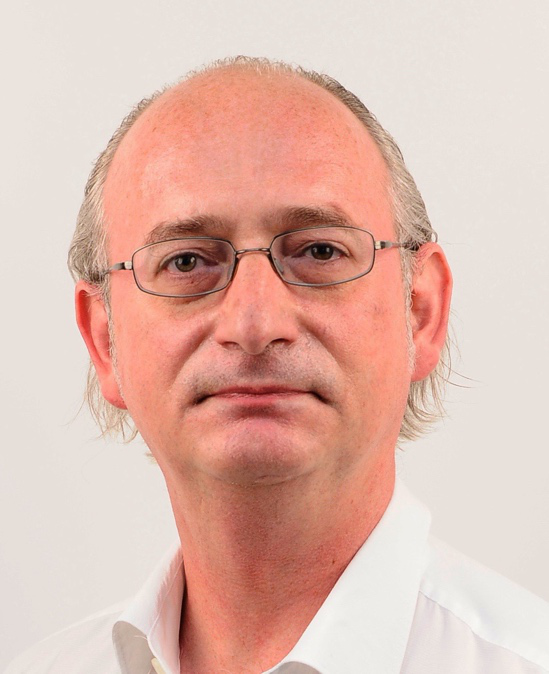题目: Functional Supramolecular Chemistry
报告人: Stefan Matile教授(University of Geneva)
时间: 2019年07月08日(星期一)上午10:00-12:00
地点: 福州大学化学化工学院嘉锡楼413

Professor Stefan Matile is a Full Professor at the University of Geneva and a founding member of the National Centre of Competence in Research (NCCR) Chemical Biology and the NCCR Molecular Systems Engineering. Currently, he also serves as the President of the School of Chemistry and Biochemistry. He is the co-author of more than 300 publications, many in top journals (57 JACS, etc), and has delivered more than 270 lectures all over the world. About half of the more than 100 junior researchers he has trained so far (PhD, postdoc) are now active in academia (China, France, Germany, India, Italy, Japan, Spain, Switzerland, USA, etc); others preferred a career in industry, or elsewhere. Educated at the University of Zurich (PhD, with Wolf Woggon) and Columbia University in New York (postdoc, with Koji Nakanishi), he started his independent academic career as an Assistant Professor at Georgetown University, Washington DC, before moving to Geneva.
His research interests are in functional supramolecular chemistry, supramolecular systems in action, at work, with emphasis on the integration of new or at least underrecognized concepts and principles into functional systems, particularly unorthodox interactions. The general expectation is that the integration of new ways to get into contact would ultimately yield new functions that will allow us to tackle challenges in the chemical, the life and the materials sciences that are otherwise beyond reach. Current functions of interest are catalysis with anion-π interactions, chalcogen bonds and pnictogen bonds, the creation of mechanosensitive fluorescent probes to image physical forces in biological systems, and dynamic oligochalcogenide exchange chemistry to find new ways to enter into cells (tension, walkers, adaptive networks). Long-standing topics of interest also include transport across lipid bilayer membranes, sensors and artificial photosystems (molecular tongues, noses and leaves).
More: www.unige.ch/sciences/chiorg/matile/
报告简介:
Functional Supramolecular Chemistry
Stefan Matile
Department of Organic Chemistry, University of Geneva, Geneva, Switzerland
This lecture will focus on synthetic supramolecular systems with interesting functions. Particular emphasis will be on the integration of new (or almost new) concepts and principles from supramolecular chemistry into functional systems. The general expectation is that fundamentally new approaches to create function will ultimately allow us to tackle challenges in chemistry, biology and the materials sciences that are otherwise beyond reach. Functions of current interest include catalysis with anion-π interactions,1,2 chalcogen bonds and pnictogen bonds,3 mechanosensitive fluorescent probes that change color like lobster during cooking to image physical forces in biological systems,4 and dynamic covalent exchange chemistry to find new ways into cells and deliver otherwise problematic substrates (e.g., quantum dots,5 artificial metalloenzyme). From these lessons from supramolecular chemistry, new privileged scaffolds are emerging regularly, including naphthalenediimides (NDIs),1 dithienothiophenes (DTTs),4cyclic oligochalcogenides (COCs; disulfides, diselenides, benzopolysulfanes6), and so on.
For more, please visit: http://www.unige.ch/sciences/chiorg/matile/
(1) Zhao, Y.; Cotelle, Y.; Liu, L.; Lopez-Andarias, J.; Bornhof, A.-B.; Akamatsu, M.; Sakai, N.; Matile, S. “The Emergence of Anion-π Catalysis,” Acc. Chem. Res.2018, 51, 2255–2263.
(2)Zhang, X.; Hao, X.; Liu, L.; Pham, A.-T.; Lopez-Andarias, J.; Frontera, A.; Sakai, N.; Matile, S. “Primary Anion-π Catalysis and Autocatalysis,” J. Am. Chem. Soc.2018, 140, 17867–17871.
(3)Benz, S.; Poblador-Bahamonde, A. I.; Low-Ders, N.; Matile, S. “Catalysis with Pnictogen, Chalcogen and Halogen Bonds,” Angew. Chem. Int. Ed.2018, 57, 5408–5412.
(4)Goujon, A.; Colom, A.; Straková, K.; Mercier, V.; Mahecic, D.; Manley, S.; Sakai, N.; Roux, A.; Matile, S. “Mechanosensitive Fluorescent Probes to Image Membrane Tension in Mitochondria, Endoplasmic Reticulum and Lysosomes,” J. Am. Chem. Soc.2019, 141, 3380–3384.
(5)Derivery, E.; Bartolami, E.; Matile, S.; Gonzalez-Gaitan, M. “Efficient Delivery of Quantum Dots into the Cytosol of Cells Using Cell-Penetrating Poly(disulfide)s,” J. Am. Chem. Soc.2017, 139, 10172–10175.
(6)Cheng, Y.; Zong, L.; Lopez-Andarias, J.; Bartolami, E.; Okamoto, Y.; Ward, T. R.; Sakai, N.; Matile, S. “Cell-Penetrating Dynamic-Covalent Benzopolysulfane Networks,” Angew. Chem. Int. Ed., in press.